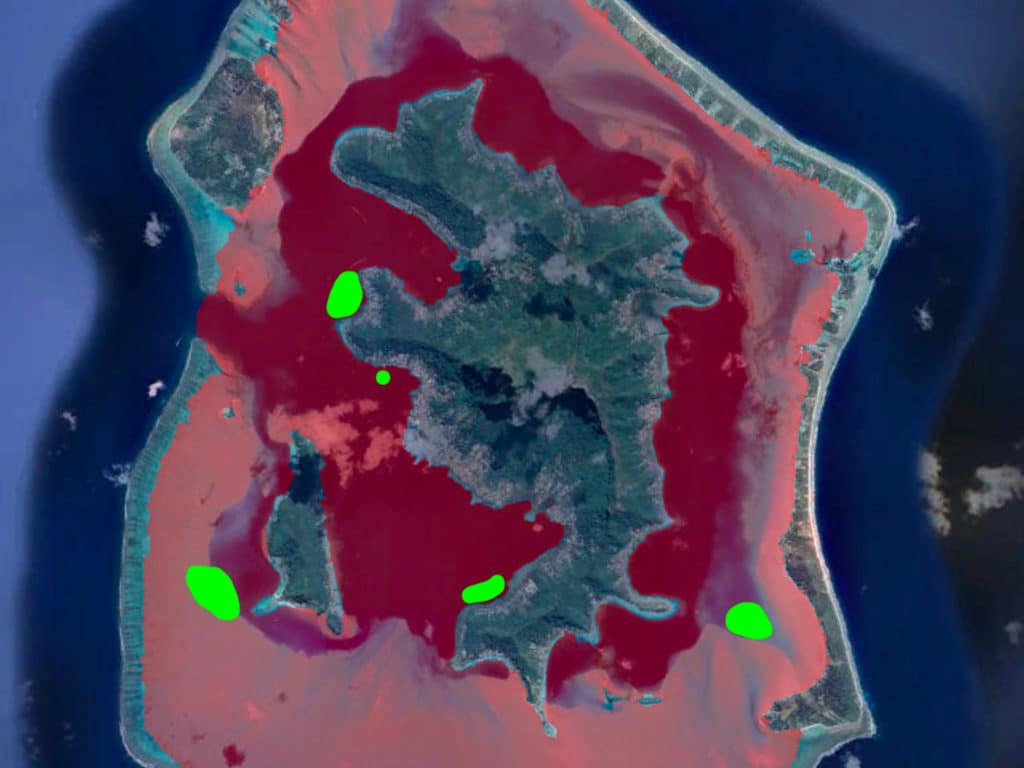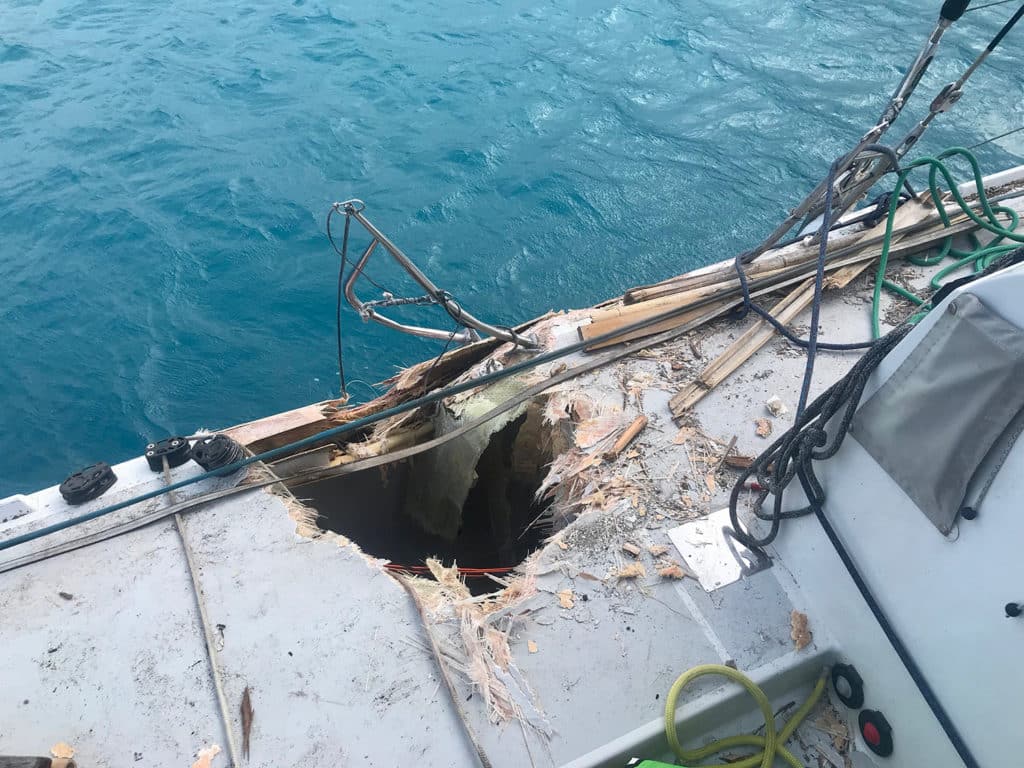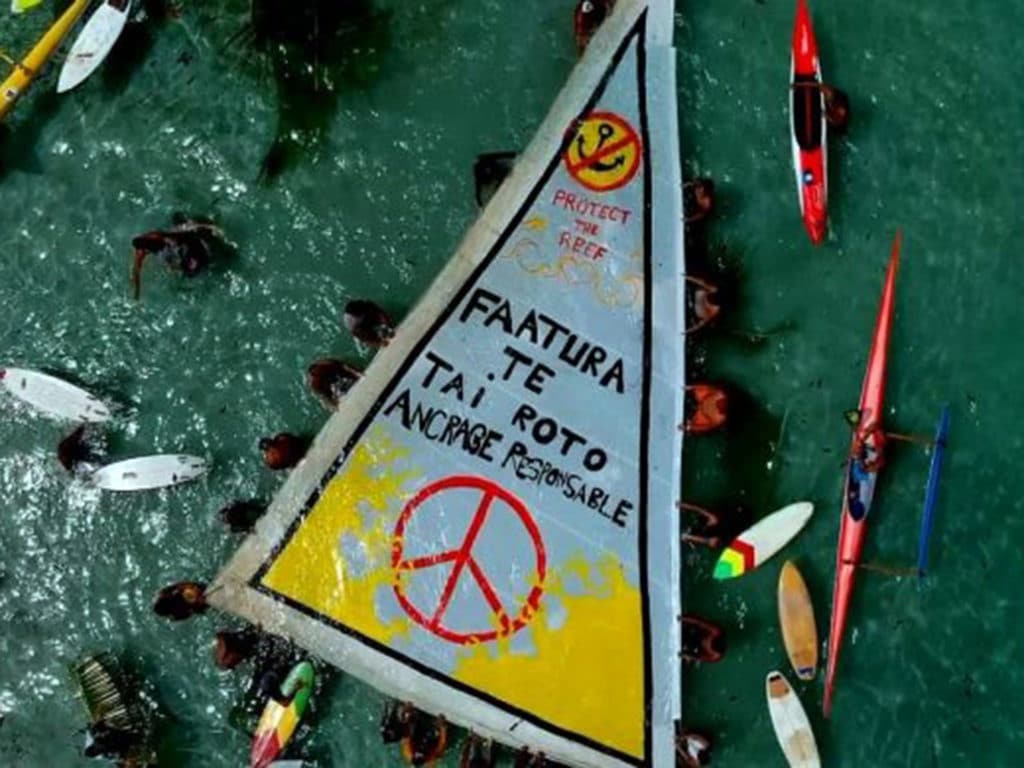
“Should we skip Tahiti?” A question I never thought I’d hear was asked seriously over sundowners last week as we discussed 2020 plans.
The popular cruising destination is sending a strong message that cruisers aren’t wanted anymore. Last week, a local cruiser reported that police began clearing boats from the busy Taina anchorage in Tahiti. This is overwhelmingly where transient boats anchor when they visit the largest island in French Polynesia. There was little notice for the meeting called to discuss plans, and no alternate option offered; the marina in Taina is typically booked in advance and not a ready option.
Tahiti isn’t the only spot in French Polynesia that’s tightening regulations and forcing out boats. Bora Bora has banned anchoring entirely. Moorea is expected to follow suit soon. There is a wider trend in French Polynesia to grow restrictions: local press report that the goal is to regulate anchoring throughout the islands. Meanwhile, in Tahiti, the port authorities clearing the Taina anchorage stated clearly that “there is no Plan B” for relocating the cleared boats; particularly unfortunate timing and tone given that cyclone season begins there this month.
Maybe it’s not a big deal to be required to use moorings or marinas. But it’s more complicated than just planning ahead and budgeting a little more. Ask the Hynes family on the Outremer 51, Archer. His family returned to the mooring field in Bora Bora where they’d left their boat to go ashore for dinner in July. Archer wasn’t there: a search found the boat blown downwind until it hit the unforgiving structure of a resorts’ overwater bungalow after the mooring (about $30/night) they secured their boat to broke, causing massive damage to the vessel.

“It’s really sad what happened to our boat,” Seth reflects, “but even sadder to see what’s happening regionally. I think it’s great the locals want to protect their islands, but I wish they would have worked with the cruising community to do this safely rather than rush in change. By enforcing the “no anchoring” law before the infrastructure was in place it has put all of us in a very dangerous situation. I’m glad no one got hurt on our boat or at the hotel as things could have been much worse.”
Bonaire has done a fantastic job of protecting their fringing reef by requiring boats to pick up affordable moorings. It is magical to swim under your boat on a vibrant, thriving reef at snorkeling/freediving depth that this setup makes possible.
Cruisers all know the mantra not to trust a mooring until you’ve been able to check it. Easy in Bonaire, and we replaced the fraying line. But how could Archer have realistically been expected to check the shackle at 85’ of depth that broke? Of course they can’t, they have to rely on the integrity of the owners/managers, and that chain in Bora Bora clarifies a motivation for profit over vessel security.
Why is this happening?
The move in Tahiti is due in part to a development plan, but read the local press articles about restrictions and local sentiments come out. It hurts to know reader comments indicate they’re happy for cruisers to go away, angered at the lack of respect they feel is shown for the local community and environment.
In Huahine, a youth group staged a protest that included floating a big mainsail painted with “no anchoring” – and gave press pictures of the coral damage caused by careless boats. Here, at least, is a positive move to direct boats to anchor in a boxed area away from the reef and vulnerable coral (fantastic, but sad they had to take this in their own hands). In Raiatea, the next most populous island after Tahiti, there were problems this past season with local boats aggressively threatening cruisers, with tactics ranging from verbal assault to cutting anchor rode.

Are there just too many boats? A couple of factors combined to significantly increase the number of boats in the area. A few years ago, French Polynesia began allowing vessels to remain three years before requiring importation (previously, boats were limited to just a few months). Then long-stay visas became easier to acquire, so not only visiting boats but their crews can readily spend more time in the islands. There are simply more boats, and enough of those boats are not respecting the local mores. This is a response to a perceived invasion of disrespectful cruisers. The complaints range from cultural to environmental, and they are not for you or I to judge as the guests in a place; it’s for the hosts, who seem ready to stop playing that role.
All this played into that conversation over sundowners a few nights ago, as we sat under Totem in the not-so-romantic shipyard with visions of much-more-romantic tropical anchorages in mind. Should we consider a major re-route and skip French Polynesia altogether? Hey, I’d love to visit my family in Hilo. The off-track destinations of Kiribati hold deep appeal. We want to skew towards places we haven’t visited before, anyway.
We were dead serious for about 20 minutes, then snapped back to reality. Of course we’ll go to French Polynesia! There are MANY islands, and we plan the least amount of time in the areas most subject to restrictions.
I’m keen to find the lesson in any situation. What’s the lesson here? That we (cruisers) need to lose entitlement and gain perspective for our negative impact, real or perceived. It’s incumbent on us to proactively be good citizens. Helping in this regard is AVP (Association Voiliers Polynesie); they’re meeting with authorities to represent cruisers and find a bridge to educate cruisers and charterers on visiting responsibly, while boosting local confidence that these boats contribute to rather than detract from their community. Anyone can join the organization and help them advocate for the cruising community. Visit the website for details.
My friend Holly Scott sails her boat out of Raiatea, and rightly pointed out – these islands pushing out cruising boats are both the least interesting and the most touristed. They are exactly the places we prefer not to spend much time in. But they are the popular names that are familiar to outsiders, and have a historical draw based on beaten paths and accessibility. There are many nicer places to explore in French Polynesia. And hopefully, as they are visited by those with a keen eye for respect to local customs and environment. We’ll keep an eye on the situation, spend less (or no) time in the Society islands, and always be mindful that we’re guests in their home.
My facts will not be perfect here, in great part because the situation is changing so quickly. Big thanks to Linda Edeiken of Jacaranda, amazing ambassadors for the cruising community – I first learned about this from Linda; to Ryan Levinson, for his work in FP representing cruisers with AVP; thanks Seth Hynes for contributing, sorry your lovely Archer had to be the canary in this coal mine!








